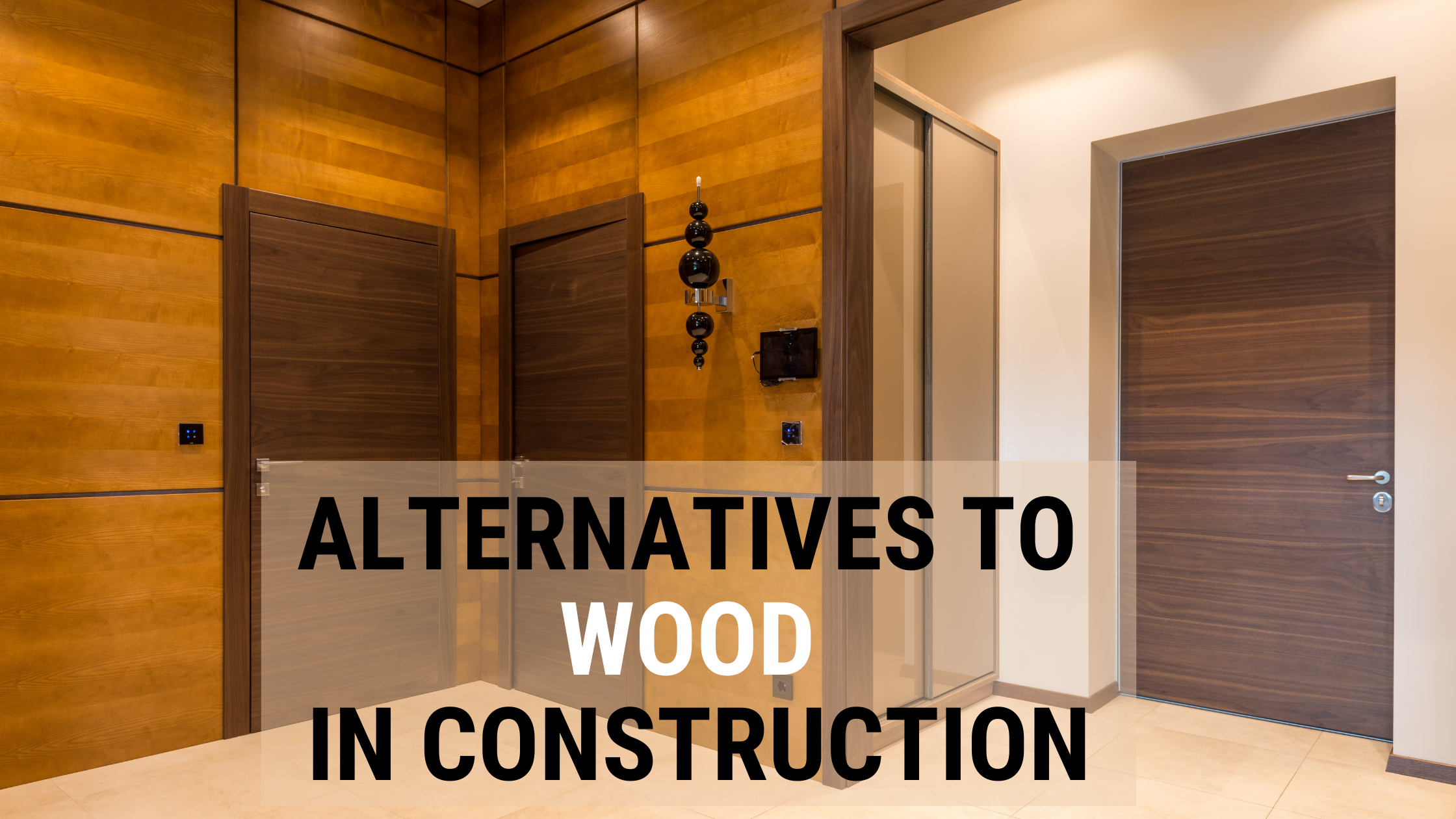In one of our earlier posts, we have seen how wood is an essential ingredient in the building construction ecosystem. We learnt that there are different types of wood like hard wood, soft wood and engineered wood, that find common use in the building construction industry.
Hardwood like teak, rosewood, mahogany etc find its use in making furniture, doors, windows and frames. Soft wood are more flexible and lighter compared to hard wood and are also used for doors, windows, and their frames. While hardwood and softwood are naturally obtained, Engineered wood is manufactured by binding together fibers, wooden strands etc and treating them under pressure. Plywood, MDF(Medium Density Fiber) and chipboard are examples of engineered wood.
Wood has been the preferred option for furniture and joinery for decades, but over the last several years, many alternatives to wood have also been widely in use. Let us have a look at some of the alternatives for wood in joinery.

Steel
Steel has been in use in the construction industry for ages. It finds its use in the reinforcement of concrete and in the construction of steel framed truss roof. Steel joinery has also been gaining popularity over the years.
Steel doors is not usually made of solid steel due to its sheer weight. It is made of polyurethane or polystyrene core with a layer of steel on the outside. Steel reinforcements are provided internally for structural stability.
When compared to wooden doors, steel doors are stronger and more resistant to climatic changes. The common problem of wooden doors getting jammed during rainy seasons does not occur in a steel door.
Steel doors come with the plain finish or in wooden finish where they can be made to look exactly like wooden doors. Thus steel can be a cheaper alternative for wood for joinery purposes.
However, steel doors are heavier than their wooden counterparts. There is also a risk of corrosion when used near salt water bodies.
Aluminum
Aluminum is yet another alternative to wood in joinery, that is gaining popularity. It’s main advantages are light weight and lower cost. Aluminum doors are used primarily in commercial buildings; but they are slowly finding its place in residential constructions too.
Aluminum windows are a popular choice in contemporary residential constructions, due to its greater design flexibility. Like the steel counterparts, moisture doesn’t affect aluminum doors. Moreover, aluminium doors don’t swell due to changes in weather conditions. It is an extremely flexible material, making it the ideal choice for architectural experiments. Fixed, sliding, pivot, casement and tilted are a few common aluminum window designs. They can be fabricated into any desired shapes, and spray painted with any colour.
Aluminum offer better sound insulation properties and therefore a popular option for schools and hospitals.
uPVC (unplasticized Poly Vinyl Chloride)
uPVC doors and windows come and ready manufactured units that can go into the door/window space. A skilled mason can easily fit in the uPVC fixture in the allotted slot without much hassle.
uPVC window frames come in different colours and texture that match with the overall interior design theme of your building. Just like aluminium window frames, uPVC also come in fixed, sliding, pivot, casement and tilted options.
uPVC gives a special aesthetic appearance to your interiors and can be used anywhere like bedrooms, kitchen, living rooms or home office. They are light in weight and requires very little maintenance. Good quality uPVC is slightly on the more expensive side.
Hollow core doors
They are made of fibre boards or laminated wood. Hollow core doors are very light and not as strong as wooden doors. So, they cannot be used as exterior doors. Also they are not water resistant. These constraints limits the use of hollow core doors to inside doors like bedroom or kitchen doors.
FRP (Fiber Reinforced Plastic Doors)
FRP doors are light in weight, highly durable, long lasting and require very minimal maintenance. They are suitable only for inside doors and installation is quite simple.
WPC (Wooden Plastic Composite)
WPC is one of the other alternatives to wood, like FRP and is made of thermoplastics, wood powder and additives. It is cost effective and provides good strength and is mostly used for windows and interior doors.

